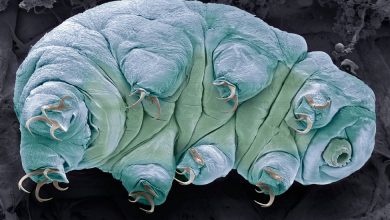Counting the World’s Ants Requires a Lot of Zeros

Right now, ants are scurrying around every continent except Antarctica, doing the hard work of engineering ecosystems. They spread seeds, churn up soil and speed up decomposition. They forage and hunt and get eaten. You may not know how much you rely on them.
“Ants are the movers and shakers of ecosystems,” said Nate Sanders, an ecologist at the University of Michigan. “Knowing anything about them helps us understand how ecosystems are put together and how they work.”
“I would argue most ecosystems would simply collapse without ants,” said Patrick Schultheiss, an ecologist at the University of Hong Kong. As some naturalists worry about an insect apocalypse, scientists are racing to keep track of what’s at stake. But they didn’t know how many ants there are or where they live.
Dr. Schultheiss and colleagues have a new ant census count: 20 quadrillion — 20 with 15 zeros following it. Ants outnumber humans at least 2.5 million to 1. Ants biomass is around 20 percent of human biomass, or the mass of carbon from the nearly 8 billion humans now living on Earth. The ant biomass also weighs around 12 megatons, which is about the equivalent of two Pyramids of Giza on a scale.
Their estimate, published on Monday in the Proceedings of the National Academy of Sciences, assembled censuses of ants living or foraging at the surface that scientists had previously produced around the world. In over 1,300 locations, ants were collected from leaf litter samples or in pit traps, which they fall into while foraging. The researchers used those counts to estimate the abundance of ants for different environments including tropical forests and arid shrublands.
The study used a logical, solid approach, said Dr. Sanders, who was not involved in the study, but it hadn’t been done before.
Previous measures of global ant population and biomass have been either approximations based on the planet’s total insect population or extrapolated from particular parts of the world. Estimates for ants’ total biomass had a wide range, from 2.5 megatons of carbon to 70 megatons. The new study instead took a bottom-up approach, compiling all of the existing ant counts the authors could find and working up from there.
Dr. Sanders said the study’s approach “is something that you can actually look at and logically get to the same point the authors got.”
The true number of ants is almost certainly higher than 20 quadrillion because the new calculations only included a conservative estimate for arboreal ants and excluded subterranean ants altogether, Dr. Schultheiss said. There were also fewer studies with the necessary methods from some parts of the world, such as central Africa and regions in Southeast Asia, while regions like North America and Europe had more studies. As more research is carried out in geographic areas with ant gaps, as well as in treetops and soils, the ant count will grow.
“I wouldn’t be surprised if it actually turns out to be an order of magnitude higher,” said Sabine Nooten, an ecologist at the University of Hong Kong and a co-author of the study. “We’re just scratching the surface.”
Tropical areas are biodiversity hot spots for a large swath of plants and animals, and ants are no exception. Nearly 70 percent of surface-foraging ants are in low-latitude biomes, such as tropical forests and grasslands, the study found. A study in the journal Science Advances this year found the subtropics have some of the highest ant biodiversity in the world, and the new findings align with that. With tropical forests’ voluminous canopies and known densities of arboreal ants, there are likely to be far more tropical ants in the tropics than current counts.
Getting an updated ant census was an essential step for scientists to track any changes in the insects’ ecology as they monitor global insect populations for declines. They have to know what’s there to know if it’s gone missing.
“It’s a great baseline that I hope will improve with time,” Dr. Sanders said. “It’s a real call to action for biodiversity scientists around the world not only to fill in these gaps, but also to start monitoring potential changes.”




